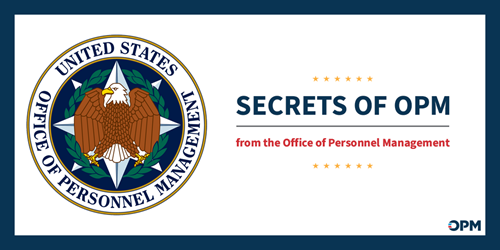You can’t manage what you can’t measure

By Scott Kupor, Director, U.S. Office of Personnel Management
October 17, 2025
If you were running an organization – government, non-profit, or private sector – how would you decide what to focus on and how best to accomplish those goals? This is not a trick question by the way; the answer is very simple.
Presumably, you’d work with your team to create a set of objectives – e.g., deliver a certain customer satisfaction score, hit a certain level of sales, raise a certain amount of donations, generate a certain amount of profit (if you are a for-profit company), enter some new market or product category, etc. Then, you’d determine what level of resources are required to achieve those objectives – how many employees do we need; what skill sets are required; what investments might we need to make in people, process, technology. Finally, you’d determine whether you have the financial ability to employ those resources (or, if not, how you might get the money) and develop a system of measurement and reporting against those objectives (metrics) to track your progress throughout the year.
Congratulations, you are now an expert in financial planning and analysis (or FP&A for the finance nerds out there) as practiced by nearly every (successful) organization in the world.
Except by the US federal government – at least until now.
The sprawling federal government complex – spending seven trillion dollars annually and staffed by over two million full-time civilian employees and (we think) at least double that number of contractors (the “shadow” full-time employee base) – has historically done no overall headcount and resource planning. As a result, your government is riddled with inefficiencies.
For example, we spend your taxpayer dollars on “non-objectives” – e.g., things other than what the president or the agency secretary has determined are in fact real objectives. We also duplicate resources that could be more efficiently managed through some modicum of planning – e.g., we have 119 disparate HRIS systems, none of which integrate with one another nor provide any broader view of overall government talent. And we have decided in our infinite wisdom that we should have nearly 300,000 hiring managers who are basically unmanaged in their ability to bring in new employees, while at the same time lacking any accountability on hiring and performance management standards.
It’s no wonder we run an over two trillion dollar annual deficit (on top of a $37 trillion debt) and have historically only traveled in a single direction with respect to headcount and expenses – that direction is up. “Constraint” is nowhere to be found in the government’s vernacular.
But no longer is that the case under the leadership of President Trump.
Earlier in the year, the president promulgated policies (which the Office of Personnel Management (OPM) is already implementing) on merit-based hiring and more rigorous performance management, both of which are designed to create an accountable and performant federal workforce.
And today the president is introducing “FP&A” into the federal dictionary.
For the first time (possibly ever), agency heads will report annually to OPM and our partners at the Office of Management and Budget (OMB) on their overall personnel management and hiring plans. Among other things, they will present: how do their personnel resources map to their objectives; what critical hiring needs do they have in order to meet these objectives; what opportunities do they have to reduce spending in areas of “non-objectives”; what is the optimal mix of full-time employees vs contractors; how are they enforcing accountability and performance management within their teams. The agencies will also report quarterly on their progress against these personnel management and hiring plans with the appropriate flexibility needed so they can respond to potentially changing areas of priority. And they will put in place strategic hiring committees staffed by senior officials to ensure the successful implementation of their operating plans.
The goal of this exercise is not for OPM nor OMB to question the judgment of our very capable agency heads; without a doubt, the “CEOs” of these organizations know their agencies far better than do we. Rather, the goal is to provide a level of pan-government visibility across resourcing in furtherance of the key initiatives that the president has laid out. And, in doing so, we can look for ways to maximize efficiency and deliver the best possible set of services to the American people.
For example, if we learn that collectively across agencies we are looking to hire 10,000 engineers this year, then OPM can help design an x-government process to facilitate more centralized hiring. Or, if we see that there are core personnel resources that are being duplicated across agencies that could be more effectively done via specialization and centralization, OPM can help drive that as well. And this list goes on.
None of this is rocket science. But President Trump rightfully recognizes that the federal government needs to operate on the same fundamental practices that do all modern organizations writ large.
Rationality prevails – at least for now – in DC.



